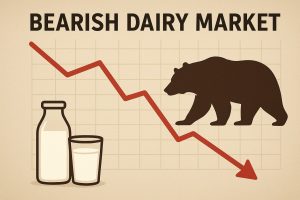
In the past several years, farmers and ranchers reported facing financial difficulties, including pandemic-related impacts, supply-chain backlogs, high costs and extreme weather events such as drought and wildfires.
The government initiative will provide aid to holders of direct or guaranteed loans administered by the U.S. Department of Agriculture Farm Service Agency.
“Through no fault of their own, our nation’s farmers and ranchers have faced incredibly tough circumstances over the last few years,” said U.S. Agriculture Secretary Tom Vilsack. “The funding included in the announcement helps keep our farmers farming and provides a fresh start for producers in challenging positions.”
USDA announced last week that it would distribute $800 million in assistance to distressed borrowers to cure delinquencies and resolve uncollectable farm debts. The funds were made available under the Inflation Reduction Act, signed by President Joe Biden in August.
The money includes nearly $600 million in payments to about 11,000 borrowers who were 60 or more days delinquent on FSA loans as of Sept. 30. Another $200 million resolves remaining debts for about 2,100 borrowers who had loan collateral liquidated but had remaining debt owed or due to be referred to the Department of the Treasury for collection. These borrowers will no longer face garnishment of tax refunds, social security benefits or other federal benefit payments, USDA said.
The agency announced $66 million for 7,000 borrowers who during the COVID-19 pandemic delayed loan payments to the end of their loans. These borrowers will receive a payment for the set-aside amount that remains outstanding.
Another 1,600 farm loan borrowers that face bankruptcy or foreclosure will receive help on a case-by-case basis to assess their problems and find solutions at a cost of $330 million. These accounts require review by the Farm Service Agency.
“On a case-by-case basis, we sit down with that individual borrower and their representatives, and what we’re interested in doing is to try to work to a point where you don’t have a delinquency,” Vilsack said. “That potentially lifts that foreclosure action or in part assists you in restructuring bankruptcy proceedings, so that requires a bit of negotiation and discussion.”
Most of the cases “are old enough that the individual borrower would’ve gone through a foreclosure action or some kind of voluntary return of collateral,” Vilsack said, adding that many of the deficiencies were on the books for more than a year.
The California Farm Bureau praised the USDA action but said more needs to be done to help.
“While these funds are not aimed directly at fixing the underlying issues that put these farmers and ranchers in such situations in the first place, we certainly approve of any endeavors that help keep producers from going out of business,” said Matthew Viohl, Farm Bureau’s associate director of federal policy. “We encourage the USDA to continue working towards reducing the regulatory and financial burdens plaguing our industry, particularly as input costs and other challenges continue to impact farmers.”
Sonoma County organic dairy farmer Jennifer Beretta said the debt relief announced by USDA benefits affected loan borrowers but not all farmers who are struggling in California. Just in her area, several dairy farms have exited the business in the past few weeks.
“I think the next round of dairies that you’re going to see go out are those that the father or mother doesn’t want their children to do it anymore because it’s just too much,” said Beretta, president of the Sonoma County Farm Bureau. “All of our costs have gone up, and we have not seen a very significant pay raise, but yet you see (rising prices) in the store. So where is that money going? It’s very discouraging that our consumers think that we get what they pay in the store, and we don’t.”
Market disruptions, drought, high production costs, regulations and compliance costs all affect the farmer’s bottom line, she said.
“Drought relief funds were great, but here at our dairy, we received about $5,000, and that didn’t even cover a load of hay,” Beretta said. “I sit on a couple boards, and we signed a letter about getting disaster funds for our farmers. Funds are great, but it takes forever, and sometimes it doesn’t match what we actually really need.”
In addition to loan relief from USDA, Beretta called for more tax credits for farmers, relaxing government regulations and more “out-of-the-box” solutions to help farmers and ranchers who are struggling.
“Let’s figure out ways that we can give credit to what’s being done by the farmers who are still producing food,” Beretta said.
To address long-term challenges facing agriculture, Vilsack said “there are other elements at work here at USDA to provide opportunities to create more new and better markets.”
“We need more new and better markets for farmers, generally. When ERS (Economic Research Service) reports that roughly 89% of farms don’t generate a majority of income for the farm family, it tells me that there’s more work to be done,” Vilsack said. “This effort in terms of proactively dealing with distressed farmers is one element, but it is by no means the only element, nor should it be.”
Vilsack said USDA is also doing the following: investing $2.8 billion in 70 projects to benefit farmers who adopt climate-smart practices; finalizing grant funding to expand processing capacity; investing in expanding biofuel opportunities for agricultural waste; and continuing promotion of agricultural exports.
“Farmers have to have more revenue streams, more opportunities to benefit from their farming operation than the traditional way,” Vilsack said. “There are multiple things underway at USDA to literally transform the system, and it’s obviously going to take some time for all that to take root.”






















